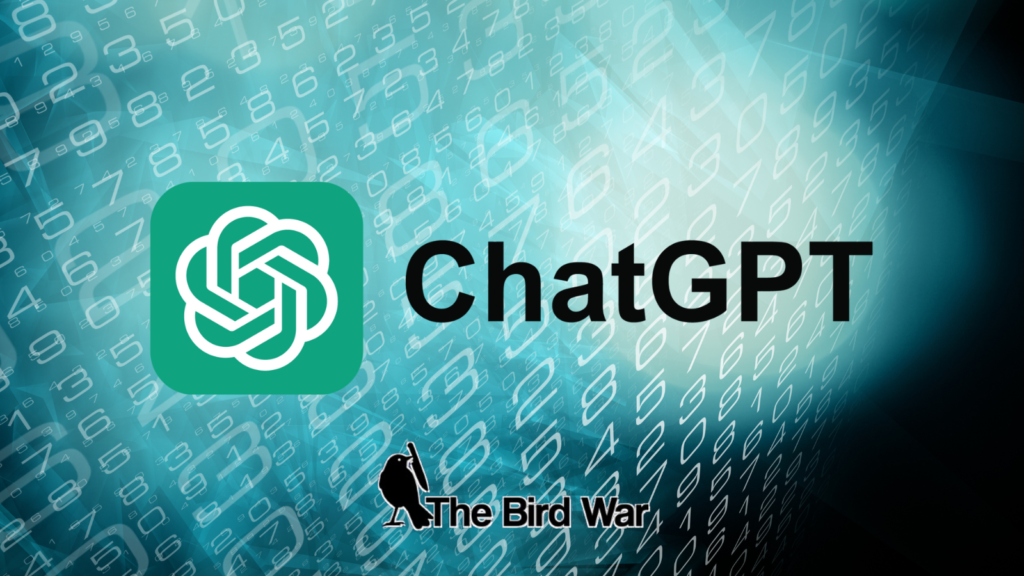
Sometimes one of the biggest problems in winning the Bird War is getting the public at large to acknowledge its mere existence.
Fortunately Chat GPT-4 — the newest version of the AI-based creation tool — knows it’s real. We asked Chat GPT-4 to write a 500-word story about the Bird War for today’s post. And the following is what it spit out:
“The world is currently facing an ongoing battle – the bird war. It may sound strange, but this conflict between birds and humans is very real, and it is taking place in many parts of the world. It is a war that we are fighting, and it is one that we need to take seriously.
“The bird war refers to the growing conflict between birds and humans. The problem began when birds began to adapt to living in urban areas. As cities grew, birds began to make their homes in buildings, nesting in eaves and other areas. This led to conflicts between birds and humans as the birds began to cause damage to buildings and become a nuisance to people.
“The conflict has escalated in recent years as bird populations have increased, and humans have become more aggressive in their efforts to control them. The bird war has become a significant issue in many cities around the world, and it is not just a problem for building owners and managers but also for the general public.
“One of the most significant issues in the bird war is the damage caused by bird droppings. Bird droppings can cause damage to buildings, cars, and other property. The acidic nature of bird droppings can eat away at paint and cause corrosion, which can lead to expensive repairs.
“Another problem caused by birds is the spread of diseases. Birds carry a range of diseases that can be harmful to humans, including salmonella, E. coli, and avian influenza. This is a particular concern in urban areas where birds can come into contact with people and spread diseases.
“In response to these problems, many building owners and managers have turned to bird control measures to keep birds away from their property. These measures include installing bird spikes, netting, and other deterrents to keep birds from nesting in eaves and other areas.
“While these measures can be effective, they are not always successful. Birds are adaptable creatures, and they can quickly learn to avoid these measures. In some cases, they may even become more aggressive in their efforts to find a place to nest, leading to an escalation in the conflict.
“The bird war is not just a problem for building owners and managers. It is a problem for all of us. Birds play an essential role in our ecosystem, and their populations are declining rapidly. The conflict between birds and humans is exacerbating this decline and threatening the survival of many bird species.
“So, what can we do to end the bird war? The solution is not as simple as just removing birds from urban areas. We need to find ways to coexist with birds, to create environments that are friendly to them while still protecting our property and our health.
“One solution is to create more green spaces in urban areas. This will provide birds with places to nest and feed, reducing the need for them to invade our buildings. Another solution is to develop more effective bird control measures that are humane and do not harm birds.
“Ultimately, the bird war is a reminder that we need to be more aware of the impact of our actions on the environment. We need to find ways to coexist with nature, to protect the species that are essential to our ecosystem while still protecting our property and our health.
“In conclusion, the bird war is a real and growing problem. It is a conflict that we need to take seriously and find solutions for. By working together and finding ways to coexist with birds, we can end this war and create a more sustainable future for ourselves and for the birds that share our planet.
Unfortunately, as you can see, Chat GPT-4 suggested we try to “co-exist” with the birds. It makes me wonder whose side the computers are on.

